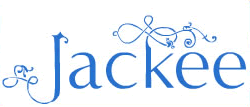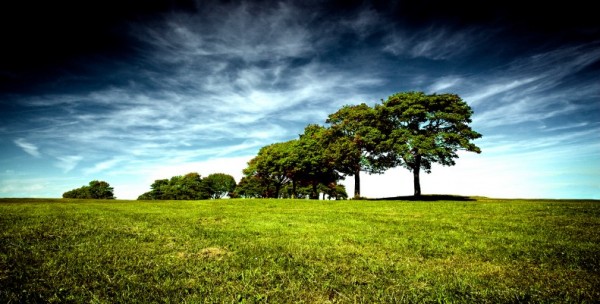Archive for June, 2014
Tuesday, June 24th, 2014
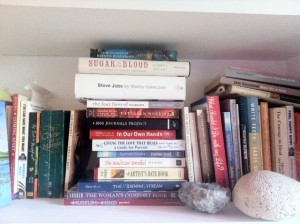
In 2011 the self-help book industry in the UK was estimated to be worth at least 6 million pounds, whilst in the US its value was around the 10 billion dollar mark.
I’m one of those millions of readers who have invested significantly in both of these markets. Over the course of twenty years I’ve deposited at least £5,000 of my personal income into purchasing hundreds of self-help and non-fiction books, which now fill one and half rooms of my home in South London and growing.
But is this a chronic case of shelf development or self-development? A point brought home recently at a talk the editor in chief of the Huffington Post, Arianna Huffington gave in London.
The question posed by a woman journalist in the audience went something like this, “with all of this information and articles on well-being most people aren’t doing anything with what they’re reading.”
I sensed an air of unease amongst the audience as she launched into a long, rambling and sometimes repetitive explanation, which despite its obvious flaws in presentation was at the core, a great question.
Her question played on my mind on the drive home from the event. It was a question I had posed to myself many times before particularly when remembering the over burdened shelves of books in the two rooms in my home, claiming every imaginable wall and shelf space.
The question begging an answer was, “How much had I really changed as a result of the hundreds of books I’ve read over the years?”
Had I really been conning myself? Had I grown victim to giving away money that simply wasn’t worth the paper it was written on? And if my self-help book addiction was anything to go by, maybe I had fallen victim to what Professor Timothy D. Wilson describes as the 18 month rule – which is the person most likely to buy a book this week is someone who bought one 18 months earlier. Only my gap between purchases was more like two weeks than 18 months.
So how can you ensure your self-help books don’t end up as shelf development?
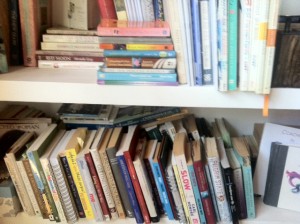
1. Choose self-help books, which include research of some kind to evidence the techniques and models presented. Two of my four books contain references to research. 49 Ways To Write Yourself Well, my third book is based primarily on research into the therapeutic benefits of writing.
I remember one of the first comments the course director, Simon Western on my post graduate qualification in coaching at Lancaster University made to our group was that, “ too many coaches had abandoned, left brain, critical thinking in favor of right brained, positive thinking, but we need both.”
I think the same is true of the self-help industry. For self-help books to not sink but swim then they need to include research and scientific data that validates the content and numerous claims made.
2. The majority of self-help books glibly evade writing about and helping the reader accept that pain is part of life and avoid dispensing tried and tested advice on how to respond and be with pain.
Self-help books that tell the truth are empowering. Trying to gloss over life with suggestions and activities that are surface level is both ineffective and unreal.
Author of one of the more recent best selling self-help books, This is How, by Augusten Burroughs (which by the way I do recommend) describes this as, “So certain feelings are denied. Which is something like believing your house is clean as long as you don’t peek under the bed.”
According to psychologist Oliver Burkeman, “instead of trying to psych yourself up into the right mood to act, learn to act alongside whatever mood you’re in.”
3. Be willing to put in the work. Most of the time it’s not that a self-help book doesn’t work. It’s that we don’t do the work that will bring about the change. “Real optimism is not the pep talk you give yourself. It is earned through the labor of emotional housekeeping,” writes Augusten Burroughs in,This Is How.
We kid ourselves that the sheer act of reading alone will somehow miraculously improve our lives and fix us in an instant without the need to lift a finger.
Some books do put me in a hypnotic trance for a moment or two (think Saved By A Poem by Kim Rosen and One Continuous Mistake by Gail Sher) but the trance soon wears off and then the challenge is to get down to work.
Fear is often the cause of our resistance to putting in the work. In her chapter, Reflections On Learning To Work, included in the book,Working It Out, psycholinguist, Virginia Valian describes our obsession with speed and production, “The culture decrees that you should do what you are good at, rather than what you most like to do; that what you produce rather than what you get out of what you produce is what counts; ….”
So often it is the application, what you get out of what you produce [or do] that creates the change or shift.
The introduction to Valian’s chapter gets straight to the point, letting the reader know exactly what reading the chapter will not do. “It will not remove your self doubts, resolve your inner conflicts, wipe away your anxieties, or eliminates your periods of mental paralysis. It will not wave a magic wand and turn you into someone who works effortlessly for hours everyday.” More self-help books should come clean like Valian does.
4. The best self-help books will address relapses and setbacks as well as provide you with further information on where to gain professional support on taking the work further.
Seek out books that include all of the above and next to your book make sure there’s pen, paper, notebook or your digital recording device. Make a note of all the actions you take and record the impact no matter how small.
As Mark Matousek, author of, When You’re Falling Dive said in a recent workshop, “dig in one place.”
I suggest to you and to myself to read a self-help book as if you’re digging in one place. Give it your full attention and focus. Test out the suggestions. Make a note of what works and do more of it.
Maybe there’s one suggestion in the book that turns out to be a real gem. Hold onto it, discard the rest and start applying what works.
As they say you can take a horse to water but you can’t make it drink. One could say the same for all the books in my collection. Put it this way if I was forced to choose a handful of books from my collection to take with me to a desert island you can bet it will be those titles where I’ve continuously put in the work, reflected on my actions and made changes and shifts as a result.
What’s the one self help book that has had the greatest impact on your life to date?
My answer:The Artist’s Way by Julia Cameron
Why: The practice of Morning pages has become a way of life for the last twenty years and is at the roots of my tag line for my business: Writing changes lives and lives, are changed by writing.
No Comments
Monday, June 23rd, 2014
Welcome to the first of two guest blog posts from Janet Limb about meeting two of her favourite authors.
Her post made me ask the question: What’s the one thing on my bucket list that won’t go away?
I have a bit of a half hearted ‘bucket list’. Not really being a thrill seeker it hasn’t always gone that well. I tried skiing once and hated it. The horse ride along a golden beach at sunset ended abruptly after the horse threw me off and I gave up on the Red Sea scuba diving course, after two days I felt claustrophobic in the diving suit.
The thing that doesn’t go away is the desire to meet my ‘writing heroes’
In July 2012 and I went on a writer’s retreat with Jackee Holder at the beautiful Orthona Centre in Dorset. One of our afternoon assignments was to write about a favourite book.
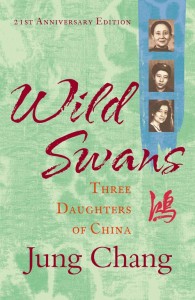
I closed my eyes and a title grabbed my attention; ‘Wild Swans’ by Jung Chang which I’d read almost twenty years previously so it wasn’t an obvious choice. At the time I felt like I didn’t so much read that book as it read me. It was my companion on the long tube journey to and from work; several times I missed my tube stop as I was so engrossed.
Wild Swans; Three daughters of China was an astounding story of three female generations of a Chinese family; Jung Chang (the writer) her mother (a communist in the revolution) and her grandmother (concubine to a warlord).
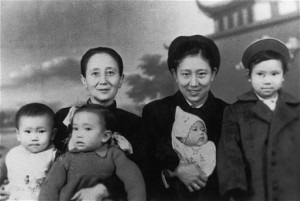
Almost two years after the writers’ Retreat I’m sitting in front of Jung Chang herself at the Charleston literary festival near Lewes. I can hardly breathe with the excitement – looking at one of my writing heroes.
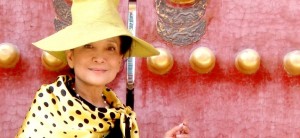
Jung Chang reminds me of a beautiful bird, a nightingale. She looks nowhere near her 62 years. She is gorgeously dressed in a traditional Chinese costume of the period of her new biography (The Empress Dowager Cixi: The concubine who launched modern China). She laughs, she chatters, she’s so knowledgeable and passionate about her subjects. She tells us her books are still banned in China; her dearest wish is for her ‘Wild Swans’ to fly in the country of her birth.
As I listen to her I remember my vision at the writers’ retreat two years earlier, I realised then that there is a story to tell from the women in my family. My mother, grandmother and my own story, and the men that betrayed us, generation by generation. Set against the back drop of two world wars, the post war recovery of the 1950’s and my family’s rise out of the grime of factory life in the working class. After that writers’ retreat that story faded away and life carried on.
Now sitting here at the upmarket Charleston literary festival so much a contrast to the grey Midlands city of my birth I realise that this story is still very much alive in me. Whilst my mother and grandmother always joked of writing a book, the baton has been passed firmly down the generations to me.
Jung Chang tells us that she always wanted to be a writer and had to escape to the west to succeed. It was an impossible dream in China, aged sixteen after first daring to write a poem on paper she had to flush it down the toilet to avoid it being found during the frequent Government raids on the family apartment.
Even after living in the UK for several years she could not write, who could blame her for her writers’ block! Many years later her mother’s first visit to the west provided the motivation and the seeds for Wild Swans which became (according to the Asian Wall Street Journal) the most widely read book about China. My excuses for not writing seem pallid in comparison.
After Jung Chang’s excellent talk I buy the 21st Anniversary Edition of Wild Swans. Jung Chang signs it proudly, her name first in English and then Chinese. I thank her for writing the book and in turn inspiring me to write my family story.
She looks at me and points her pen. ‘When you start looking in the family history, you find that there are interesting stories to tell’ she says. Her eyes glisten when she speaks and I know she is so right.

About Janet Limb
As a child Janet Limb was always reading and dreamed of one day becoming a writer. Aged 50 this year she decided it was finally time to pick up the pen and have a go. She lives in a beautiful Sussex village and works for the NHS as a day job. Janet will be joining me this Friday for the Inside Out Writers Retreat in Greece. I’m looking forward to the unraveling of her stories.
No Comments
Friday, June 20th, 2014
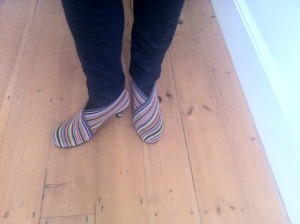
My coaching client arrived for her coaching session in this amazing pair of shoes which, caught my eye the moment she walked in the door. Not only do I love the colours and the style but I also have the same pair of shoes but in different colours. In case you’re wondering where to find a pair here’s the link:
As we admired her gorgeous pair of shoes she let me know that these were called her ‘Inspirational Shoes’. She wears them when she wants to be inspired and feel uplifted. I get it!
- I’m curious about what item of clothing do you wear that gives you that lift?
- What items of clothing or outfits make you not only look good but feel good?
- Do you have a lucky outfit for interviews and important events?
- Is there a psychology behind some of the clothes that we wear?
I’d love to hear your thoughts.
No Comments
Monday, June 9th, 2014
Our environments have become increasingly and worryingly noisier. We talk and text constantly on mobile phones. It’s the norm to see couples and friends out eating and drinking, and everyone will have their heads down texting or tweeting, even whilst in conversation. So it’s not surprising that as our digital talk increases we’ve steadily become poorer listeners, not better ones. So how does one become a better listener and can you learn to listen well?

Click here to read more of this post at Welldoing.Org
No Comments
Monday, June 9th, 2014
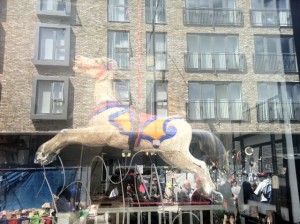
Yesterday I took a few hours out and wandered around Spitalfields market in East London. I got there early before the crowds descended on what turned out to be a gorgeous, sunny day.
Just wandering without much of an agenda was totally relaxing and freeing. I had a full on week and spent alot of time in the company of other people. I was hungry for time with me and it was what my Imind needed, some me time. I really like the idea of wanderign around anonomous surrounded by people and was a great way to.
At one point I sat down at a bench in the middle of the main market square and write. It felt natural and safe. The noise around was strangely comforting and I must have tricked my inner critic into turning a blind eye and into believing that I couldn’t write under such conditions.
On my way in towards the main square I passed a graffiti artist at work adorning a brick wall and by the time I had returned his work was done.
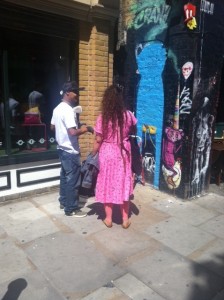

I had gone on what writer and creative writing teacher Julia Cameron calls taking an Artist dates. An Artist dates is an appointment with yourself where you go and visit different neighbourhoods or take yourself of to a museum, art gallery, show or whatever takes your fancy. But you must do it alone.
Wandering allows me to empty. It opens me up making it possible for new ideas to come to my attention with very little effort on my part. My wanderings had warmed me up and stimulated my creative juices. In between wandering around I kept receiving sparks of ideas and solutions.
- This week why not book yourself in for an artist date?
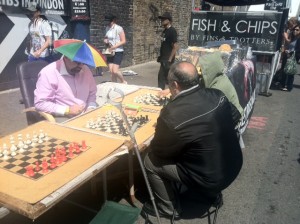
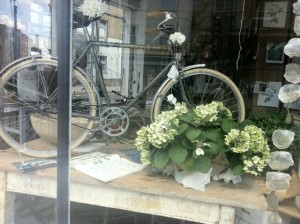
No Comments
Monday, June 9th, 2014
I captured this wonderful formation of the clouds yesterday as they passed over our garden on my iphone.
I think that this arrangement of clouds are what meteorologists would refer to as, “Cirrocumulus clouds.” indicating that the weather is going to stay the same without any major, sudden changes. Judging by todays weather so far I think the clouds were right.
I loved the way they travelled swiftly across the sky in my part of South London.
- Have a look up at the shape of the clouds in the sky right now.
- What do you imagine them to be saying about the weather tomorrow?
- Take a five minute break and mediate on the sky





No Comments
Friday, June 6th, 2014
“Even after its death, an ancient tree continues to provide habitats for wildlife, for decades more”
- Ancient Trees: Trees That Live To A Thousand Years
Many of my coaching clients know how much I love trees. I regularly use trees as examples and metaphors when I’m coaching. When I get time to head out into nature I turn to trees to re-energise and replenish myself when I feel stressed or overwhelmed.
Recently one of my former coaching clients, Fiona Parashar (Leadership Coaching) sent me a picture of a tree she’d captured on camera whilst out having what she described as a Restorative day. “The trees in Bath are wild today,” she wrote. I wrote back and asked why this particular tree resonated with her? Her reply, “Its full bloom spoke to me.” I smiled when I read her words.
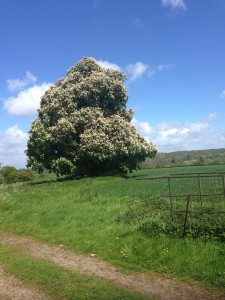
In a recent post on the Coaching Supervision Academy blog executive coach and coach supervisor Elaine Patterson reframed the word resilience to resourcing. She described resourcing as, “creating a bigger energy within ourselves . . . . .” You can continue reading her blog post here
The word re-Sourcing, which Elaine Patterson writes about is a good word to use when I think about what my client and I both gain from our connection and love of trees.
Last week my partner’s cousin came to stay overnight. Whilst all three of us caught up on our week in the kitchen preparing dinner she shared how she gone with her mother and sister to an arboretum where they planted a tree for her sister who had sadly passed away the previous year.
The idea for planting a tree had come about because her sister had been cremated and their mum was finding it hard having nowhere significant to go and visit her on a regular basis. So not only had they purchased a tree and planted her, they also planted a time capsule with some of her favourite objects and possessions, which they buried under the young tree.
Rituals are important practices to bring back into the routine of our daily lives. They provide meaning. They offer us moments to touch the sacred, to breath into what is important and allow the rhythm of the ritual to bring us back into true connection. I’ve watched as rituals have helped coaching clients reconnect to the present, to their lives and most importantly to themselves.
In the past trees held very symbolic places in our communities and in our cultures. In many agricultural communities trees provided valuable food and shelter.
Ancient trees were often a prominent meeting point in many communities. If we consider the importance and focus of the altar in a religious building then many trees were considered places of reverence and worship in nature.
In my role as an interfaith minister I’ve officiated a wedding blessing under the watching eyes of a huge evergreen oak in a South London Park. And once when I had hit a very dark place in my life several of my friends entering from the four directions joined me early one morning in a healing ritual under the watchful guidance and presence of that same tree.
I really do love trees and I miss the time I would spend really connecting with their presence. I wonder if you feel the same way too? If the weather’s as nice over the weekend as it was today then see if you can find a moment to mindfully focus on a tree in your surroundings or neighbourhood.
Why not capture on camera a tree that catches your eye. In the meantime I’ll leave you with some questions to reflect on over the weekend.
- How have you engaged trees in rituals as part of family events, services and celebrations?
- How might you involve the presence of a tree in a future event?
- What do trees mean to you?
- How have you engaged with trees in a meaningful or sacred way?
- What’s your favourite tree?
No Comments
